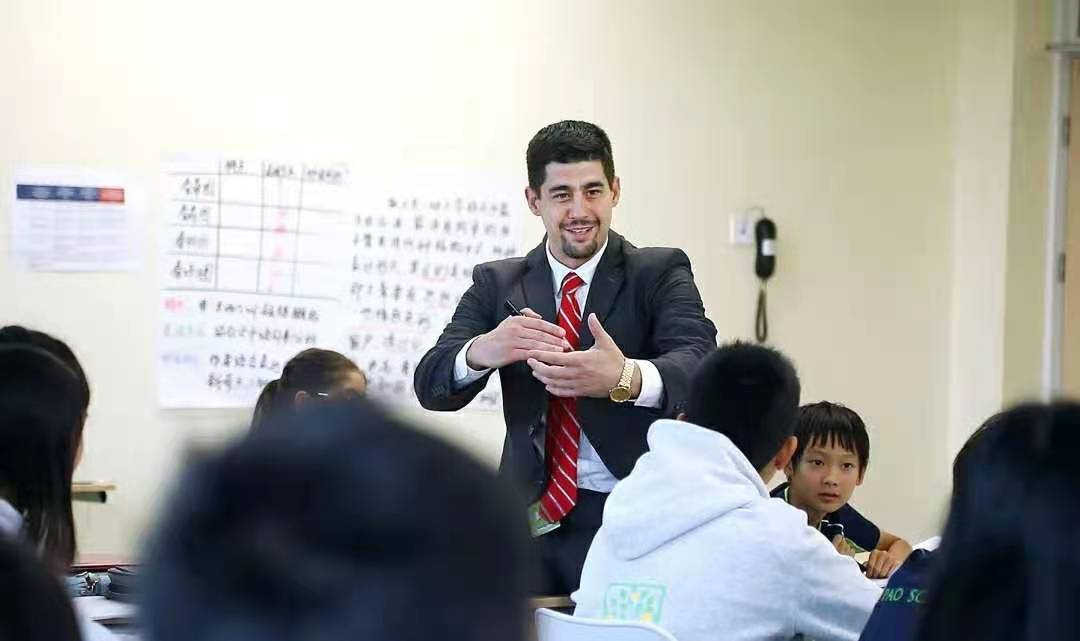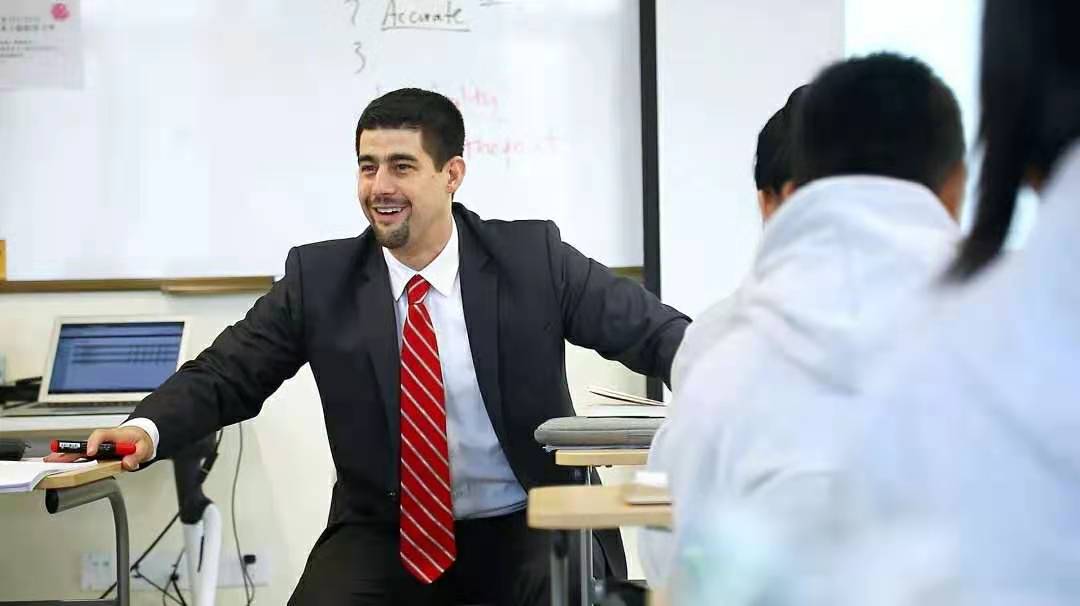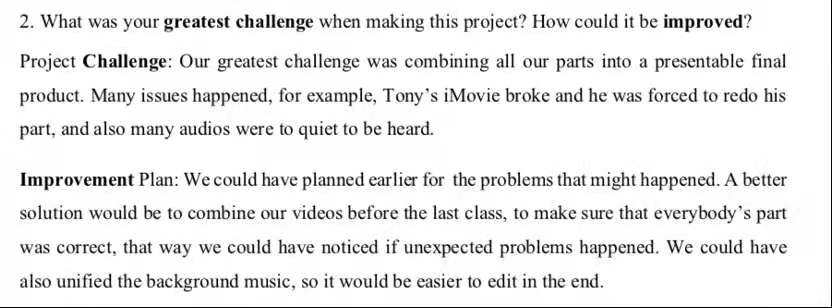One of YK Pao School's core missions is the development of well-rounded and inquisitive students, who can function well across different communities and cultures. An important aspect of this is the development of a strong humanities curriculum, which seeks to enable students to understand the world around them, the environment in which they live, culture, history, as well as to understand the theories that underpin culture and the elements of civilisation.
At the Middle School, Pao School's humanities curriculum is based on the National Curriculum - covering geography, history, ethics and the rule of law, as well as expanded content taught in English. The curriculum requires students to have certain basic knowledge and skills, but also, more importantly, to consciously cultivate their analytical thinking, creativity, research skills, oral expressiveness and ability to work independently.
If you are interested in a broader look at YK Pao School's Humanities Programme, please have a read of our previous article 'Exploring the humanities classes at Pao School'.
"Across time and place... What is humanity?”
"What takes a civilisation to its heights? What is culture? Across time and place... what is humanity?" Late last year, as they sat in history class, these were the questions our Year 7 students were pondering. Tasked with a historical civilisation – such as the Mayans, Vikings or Phoenicians – they were to make their own short documentary, trying to pin down the fundamental aspects of what it is to build a society.
Over six weeks, students were first introduced to how – regardless of where the civilisation originated – human societies held shared understandings. Each civilisation had common elements in the way they were formed, such as art, religion and government, and the students worked hard to understand the way these elements were connected. The students then identified the main aspects of their chosen civilisation and divided up the topics between team members to build their own ten-minute documentary.

Anthony Mulson, Middle School Humanities Teacher
Anthony Mulson, Middle School humanities teacher, explains that learning about the elements of civilization would later help them to deeply understand Chinese history, "Before they learned about western civilisation or Chinese civilisations, I wanted to teach them, just... what is civilisation?" Anthony Mulson, Middle School humanities teacher, explains.
Learning from the past
In previous years, instead of making documentaries, the students taught a short ten-minute presentation to the class about their civilisation. But, after facing challenges with the presentations, such as an inconsistency in how long the they turned out to be, Mr. Mulson was inspired change the project. Influenced by a cohort of students from a previous year who has submitted a mini video as part of their presentation, he decided to ask students to make a short documentary instead. This method has many clear benefits. The students have a digital record of their work, the teachers could give more thorough feedback and students could practice presenting in English. It also gave the students the opportunity to develop their digital collaboration skills, skills that are, in modern times, becoming increasingly essential.
Unintentionally, the focus on digital collaboration offset some unforeseen challenges that the young historians faced as they worked on the project. Part way through the project a group of students were unable to attend school or meet their groupmates in person, meaning that they had to work with one another remotely. Despite this, the students worked well together and laid the foundation for future remote learning and digital collaboration... even using the opportunity to branch out and try new things.

One of the key benefits of doing digital projects is the creative freedom and access to information that it provides to students, as it is much more flexible that traditional teaching methods, "It means you can think outside of the box... a textbook is a box, a classroom is a box. But this little screen, your computer, lets you go anywhere and produce anything." Mr. Mulson elaborates.
Using art to tell a story
Rachel's team (7C) decided to cover the Mayans, a civilisation from Mesoamerica, famous today for their calendar and its predictions of the apocalypse, as well as their excessively violent culture. This is what interested Rachel, who found the Mayans bloody history of sacrifice fascinating. It was for this reason her group decided to study Mayan society.
She was excited to take on this project, as she had more freedom to use her interests to express herself. Her section of her team's video focused on art and fashion, so she decided to reflect this in her use of animation in her part of the documentary. She felt the change in style would help engage her fellow classmates, "I really enjoy doing art and I thought that drawing out the Mayan fashion would be more interesting than if I put a picture from the web on it...”
"Sometimes if you are too dedicated to something you will forget what other things you need to do...”Through this project, Rachel not only learned about the Mayans and put into practice her animation skills, but she also learned more about project management. When she was creating her artwork, she was enjoying it so much that she lost track of time and found herself mismanaging her time. After this experience, states that in the future she will be more aware about carefully planning out her work and manage her time.
Bridging history and passion, across an ocean
Since childhood, Chloe (7D) has held an interest in art. Influenced by her mother's work running a studio focused on children's art education, Chloe has long explored art history and felt profoundly interested in the Renaissance period due to its enduring impact on culture and Western civilisation.
However, before they could start the project, Chloe's team had to overcome the first of many challenges. Originally the groups had been told they could not choose to study the Renaissance, due to its proximity to Greek and Roman times – periods that the students would study later on in the year.
But they were determined. Appealing their case to Mr. Mulson, he was eventually swayed by the student's passion and pre-existing interest in the time-period. He says, "Chloe was one of the students that asked in particular to do the Renaissance, because she had done art classes, learned a little about it, and wanted to learn more...”
Chloe was eager to study the Renaissance as she had read about it at home and enjoyed delving into the era's culture. She explains, "Art is a representation of society and the abundance of legendary artists [in the Renaissance period] shows a flourishing society. The prosperous businesses in the Renaissance brought a lot more need [for] decorative arts, the freer religion allowed the arts to not only focus on religion, but [to] also use references from the Olympians, and the development of science made the arts more realistic and scientific.”
Creating a modern epic
From the 6th century BC to the 20th century AD, various incarnations of the Persian Empire held court in the Middle East. The Persian Empire is considered one of the greatest throughout history, still impacting modern life today through such inventions as the battery, taxation, and an early form of the refrigerator.
It was this significance that attracted Frank, 7F, and his group to studying Persia. He says, "At first, we weren't actually dedicated to just Persia, so we did some brief research about how Persia is unique. Then we found the enormous population that the Persian empire had. They had 44% of the world's population! At that point all of our group members were mesmerized by that percentage.”
Tasked with introducing Persia's geography and architecture, Frank, was inspired to learn more about the empire and chose to add an extra section about the Persian War to the end of his documentary. With teammate Jin, he chose a somewhat unconventional method to deliver the section... rap.
Although Frank isn't a rap fan – he prefers to listen to hip hop – he was attracted to using this method because he felt that it would be more creative than using a traditional voiceover. "I chose to rap because I know that all of my schoolmates love and listen to rap... I believed doing this would make more people interested and entertained." Frank explained.
Reflecting on the past, influencing the future
Reflection is an essential part of learning. Active reflection helps people understand what went well with their work, what went wrong and how to improve in the future – so, even after the presentations had concluded, the students still had work to do in thinking back on their work.
In order to follow up the projects, Mr. Mulson asked the students to consider six questions to reflect on the projects:
1. How can this project be improved for students in the future?
2. Describe two strengths from your group's short film. What made it a success (explain)?
3. What was your greatest challenge when making this project? How could it be improved?
4. What civilisation short film do you think was the most successful? Give two examples why.
5. Write two questions you asked on the civilisations when watching the short films?What is one connection you can make between all of the civilisations projects?

Reflections for the future by Sally (7C)
The reflections were not only beneficial for the students. For the last question, Mr Mulson ensured that he asked students how to improve the project in the future – so that he can carry these ideas forward to improve his teaching methods and understand the challenges that the students faced.
Overall, the students noted challenges with time restraints and working with teammates but were proud of their final products... though Chloe, 7D, states that having to listen back to her own voice was 'suffering!'.
The Pao School humanities curriculum has always been committed to cultivating student's abilities across various areas while acquiring knowledge. In the historical civilizations project, students improved their research and independent learning skills, whilst learning more about historical civilisations. They also exercised skills such as creativity, teamwork, cooperation and expressing their work.
——Jane Hu
Head of Humanities at Middle School
Note: The report is based on teaching and learning of Y7 Humanities class in 2019-2020 school year.